Überblick über Additive Fertigung mit Elektronenstrahl (EBAM)
Stellen Sie sich vor, Sie könnten komplexe Metallteile Schicht für Schicht mit unglaublicher Präzision und minimalem Ausschuss herstellen. Klingt wie etwas aus einem Science-Fiction-Film, oder? Nun, willkommen in der Welt des Electron Beam Additive Manufacturing (EBAM). Bei dieser Spitzentechnologie wird ein Elektronenstrahl verwendet, um Metallpulver oder -draht zu schmelzen und so 3D-Objekte mit komplizierten Details und robusten Eigenschaften herzustellen.
EBAM zeichnet sich in der Landschaft der additiven Fertigung durch seine Fähigkeit aus, qualitativ hochwertige, hochfeste Komponenten herzustellen, insbesondere für die Luft- und Raumfahrt, die Automobilindustrie und medizinische Anwendungen. Hier erfahren Sie, wie EBAM funktioniert, welche Arten von Metallpulvern verwendet werden, welche Eigenschaften sie haben und warum diese Technologie die Fertigung revolutioniert.
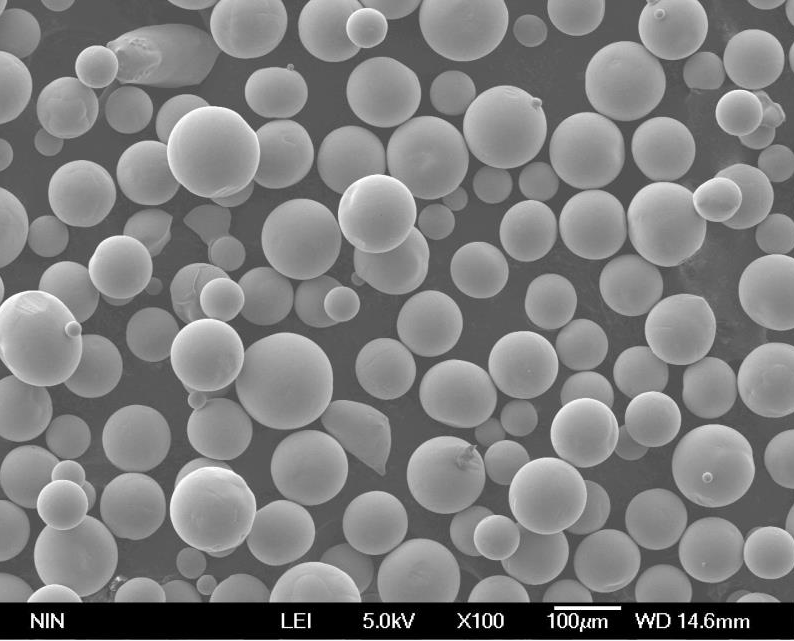
Arten von Metallpulvern für EBAM
| Metall-Pulver | Zusammensetzung | Eigenschaften | Merkmale |
|---|---|---|---|
| Titan (Ti-6Al-4V) | Ti, Al, V | Hohe Festigkeit, korrosionsbeständig | Leicht, biokompatibel |
| Inconel 718 | Ni, Cr, Fe, Nb, Mo | Hohe Temperaturbeständigkeit, Langlebigkeit | Ideal für Luft- und Raumfahrt und Turbinen |
| Rostfreier Stahl (316L) | Fe, Cr, Ni, Mo | Korrosionsbeständigkeit, hohe Festigkeit | Häufig in der Medizin- und Lebensmittelindustrie |
| Aluminium (AlSi10Mg) | Al, Si, Mg | Leichtes Gewicht, gute thermische Eigenschaften | Einsatz in der Automobil- und Luftfahrtindustrie |
| Kobalt-Chrom (CoCr) | Co, Cr, Mo | Abriebfest, hohe Festigkeit | Beliebt bei medizinischen Implantaten |
| Werkzeugstahl (H13) | Fe, Cr, Mo, V | Hohe Zähigkeit, Verschleißfestigkeit | Verwendung in Werkzeugen und Gussformen |
| Nickellegierung (Hastelloy X) | Ni, Cr, Fe, Mo | Oxidations- und korrosionsbeständig | Einsatz in der chemischen Industrie und der Luft- und Raumfahrtindustrie |
| Kupfer (Cu) | Cu | Ausgezeichnete Leitfähigkeit, Duktilität | Einsatz in elektrischen und thermischen Anwendungen |
| Titan (CP-Ti) | Ti | Hohe Festigkeit im Verhältnis zum Gewicht, korrosionsbeständig | Einsatz in der Luft- und Raumfahrt sowie in der Medizintechnik |
| Martensitaushärtender Stahl (18Ni300) | Fe, Ni, Co, Mo | Hohe Festigkeit, Zähigkeit | Einsatz in der Luft- und Raumfahrt und im Werkzeugbau |
Zusammensetzung der Additive Fertigung mit Elektronenstrahl (EBAM)
Der Zauber von EBAM liegt in den Materialien und ihrer Zusammensetzung. Die am häufigsten verwendeten Materialien sind Metallpulver oder -drähte, die jeweils aufgrund ihrer spezifischen Eigenschaften für verschiedene industrielle Anwendungen ausgewählt werden. Sehen wir uns einige der beliebtesten Metallpulver an, die in EBAM verwendet werden:
- Titan (Ti-6Al-4V): Diese Legierung ist eine Mischung aus Titan, Aluminium und Vanadium und bietet hohe Festigkeit, geringes Gewicht und ausgezeichnete Korrosionsbeständigkeit. Aufgrund ihrer Biokompatibilität wird sie besonders in der Luft- und Raumfahrt und bei medizinischen Implantaten eingesetzt.
- Inconel 718: Inconel 718 besteht aus Nickel, Chrom, Eisen, Niob und Molybdän und ist für seine Hochtemperaturbeständigkeit und Langlebigkeit bekannt, wodurch es sich perfekt für Turbinentriebwerke und andere Anwendungen in der Luft- und Raumfahrt eignet.
- Rostfreier Stahl (316L): Diese Legierung auf Eisenbasis mit Chrom, Nickel und Molybdän ist bekannt für ihre Korrosionsbeständigkeit und hohe Festigkeit, wodurch sie sich ideal für medizinische Geräte und Ausrüstungen in der Lebensmittelindustrie eignet.
- Aluminium (AlSi10Mg): Diese Legierung, die aus Aluminium, Silizium und Magnesium besteht, ist leicht und verfügt über gute thermische Eigenschaften, was sie zu einem beliebten Werkstoff in der Automobil- und Luftfahrtindustrie macht.
- Kobalt-Chrom (CoCr): CoCr, eine Legierung aus Kobalt, Chrom und Molybdän, ist verschleißfest und hoch belastbar und wird häufig für medizinische Implantate verwendet.
- Werkzeugstahl (H13): Diese Stahllegierung enthält Eisen, Chrom, Molybdän und Vanadium und ist für ihre hohe Zähigkeit und Verschleißfestigkeit bekannt und wird für die Herstellung von Formen und Werkzeugen verwendet.
- Nickellegierung (Hastelloy X): Diese aus Nickel, Chrom, Eisen und Molybdän bestehende Legierung ist oxidations- und korrosionsbeständig und wird häufig in der chemischen Verarbeitung sowie in der Luft- und Raumfahrtindustrie eingesetzt.
- Kupfer (Cu): Reines Kupfer ist für seine hervorragende elektrische und thermische Leitfähigkeit bekannt und wird in verschiedenen elektrischen und Wärmeaustauschanwendungen eingesetzt.
- Titan (CP-Ti): Kommerzielles Reintitan bietet ein hohes Verhältnis von Festigkeit zu Gewicht und eine ausgezeichnete Korrosionsbeständigkeit und eignet sich für Anwendungen in der Luft- und Raumfahrt sowie in der Medizin.
- Martensitaushärtender Stahl (18Ni300): Diese Stahllegierung, die aus Eisen, Nickel, Kobalt und Molybdän besteht, bietet eine hohe Festigkeit und Zähigkeit und ist ideal für Anwendungen in der Luft- und Raumfahrt sowie im Werkzeugbau.
Merkmale der additiven Fertigung mit Elektronenstrahl (EBAM)
Bei EBAM geht es nicht nur um das Schmelzen von Metall; es geht um Präzision, Effizienz und Qualität. Hier finden Sie einen detaillierten Überblick über die Merkmale, die EBAM auszeichnen:
- Präzision: EBAM kann komplizierte Designs mit engen Toleranzen herstellen, die für Hochleistungskomponenten in der Luft- und Raumfahrt sowie in der Medizintechnik unerlässlich sind.
- Effizienz: Durch den Einsatz eines Elektronenstrahls kann EBAM Metallpulver oder -drähte schnell schmelzen, was den Herstellungsprozess im Vergleich zu herkömmlichen Verfahren erheblich beschleunigt.
- Vielseitigkeit: EBAM ist mit einer Vielzahl von Metallen und Legierungen kompatibel, von leichtem Aluminium bis hin zu superstabilem Titan und hitzebeständigem Inconel.
- Stärke und Langlebigkeit: Die mit EBAM hergestellten Teile weisen hervorragende mechanische Eigenschaften auf, die häufig die Eigenschaften konventioneller Herstellungsverfahren übertreffen.
- Minimaler Abfall: EBAM ist ein additives Verfahren, d. h., die Teile werden Schicht für Schicht aufgebaut, wobei nur das benötigte Material verwendet wird, was den Ausschuss minimiert und die Kosten senkt.
- Skalierbarkeit: Egal, ob es sich um die Herstellung eines einzelnen Prototyps oder um eine Großserienfertigung handelt, EBAM bietet Skalierbarkeit, um verschiedenen Produktionsanforderungen gerecht zu werden.
- Anpassungen: EBAM ermöglicht die einfache Anpassung von Teilen und ist damit ideal für die Herstellung von maßgeschneiderten Komponenten, die auf spezifische Anforderungen zugeschnitten sind.

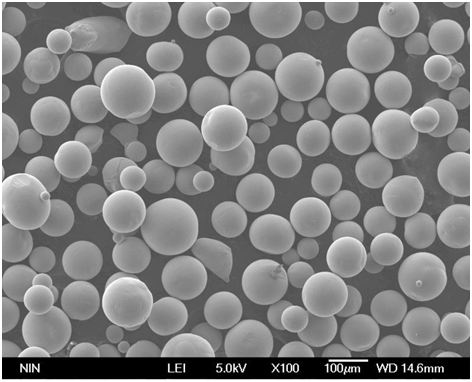

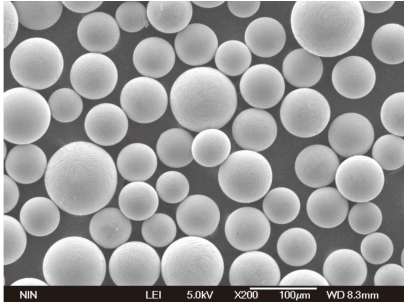
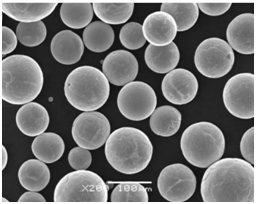
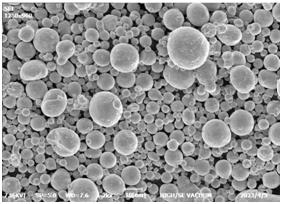
Vorteile des Electron Beam Additive Manufacturing (EBAM)
Warum sollten Sie EBAM für Ihren Fertigungsbedarf in Betracht ziehen? Hier sind einige zwingende Gründe:
- Flexibilität bei der Gestaltung: EBAM ermöglicht komplexe Geometrien, die mit herkömmlichen Fertigungsmethoden oft nicht möglich sind. Denken Sie an komplizierte Gitterstrukturen oder interne Kanäle, die die Funktionalität erhöhen, ohne das Gewicht zu erhöhen.
- Materialeffizienz: Da EBAM nur die benötigte Materialmenge verwendet, wird der Abfall drastisch reduziert, was es im Vergleich zu subtraktiven Fertigungsverfahren zu einer nachhaltigeren Option macht.
- Kosteneffizientes Prototyping: Mit EBAM wird die Erstellung von Prototypen schneller und billiger, was eine schnellere Iteration und Innovation ohne die hohen Kosten für Werkzeuge und Formen ermöglicht.
- Verbesserte mechanische Eigenschaften: Mit EBAM hergestellte Teile weisen aufgrund der feinen Mikrostruktur, die durch den schnellen Abkühlungsprozess erreicht wird, oft hervorragende mechanische Eigenschaften auf.
- Hohe Ablagerungsraten: Mit EBAM können hohe Abscheideraten erreicht werden, was sich in kürzeren Produktionszeiten niederschlägt, was für Industrien, die eine schnelle Durchlaufzeit benötigen, entscheidend ist.
- Reduzierte Vorlaufzeiten: Da EBAM den Bedarf an umfangreichen Werkzeugen eliminiert und eine schnelle Produktion ermöglicht, verkürzt es die Vorlaufzeiten erheblich und hilft Unternehmen, Produkte schneller auf den Markt zu bringen.
Anwendungen der additiven Fertigung mit Elektronenstrahlen (EBAM)
EBAM’s Vielseitigkeit und Präzision eröffnen eine breite Palette von Anwendungen in verschiedenen Branchen. Lassen Sie uns einige Schlüsselbereiche erkunden, in denen EBAM einen bedeutenden Einfluss ausübt:
| Industrie | Anmeldung | Vorteile |
|---|---|---|
| Luft- und Raumfahrt | Motorkomponenten, Strukturteile | Geringes Gewicht, hohe Festigkeit, Designflexibilität |
| Automobilindustrie | Kundenspezifische Teile, leichte Komponenten | Geringeres Gewicht, höhere Leistung |
| Medizinische | Implantate, Prothesen, chirurgische Instrumente | Biokompatibilität, individuelle Anpassung |
| Energie | Turbinenschaufeln, Wärmetauscher | Hohe Temperaturbeständigkeit, Effizienz |
| Werkzeugbau | Formen, Gesenke, Sonderwerkzeuge | Langlebigkeit, Präzision, kürzere Vorlaufzeiten |
| Elektronik | Wärmesenken, leitende Teile | Ausgezeichnete thermische und elektrische Leitfähigkeit |
| Verteidigung | Waffenkomponenten, leichte Panzerung | Festigkeit, Haltbarkeit, geringes Gewicht |
Spezifikationen, Größen, Güteklassen, Normen für EBAM-Materialien
Wenn es um EBAM geht, ist das Verständnis der Spezifikationen, Größen, Qualitäten und Standards von Materialien entscheidend, um die gewünschte Leistung und Qualität zu gewährleisten. Hier finden Sie eine umfassende Tabelle als Leitfaden:
| Material | Spezifikationen | Größen | Klassen | Normen |
|---|---|---|---|---|
| Titan (Ti-6Al-4V) | ASTM B348, AMS 4928 | 10-45 µm | Klasse 5 | ASTM F2924, AMS 4998 |
| Inconel 718 | ASTM B637, AMS 5662 | 15-53 µm | – | AMS 5663, ASTM F3055 |
| Rostfreier Stahl (316L) | ASTM A276, AMS 5653 | 15-45 µm | – | ASTM F138, ASTM F799 |
| Aluminium (AlSi10Mg) | DIN EN 1706 | 20-63 µm | – | ISO 3522 |
| Kobalt-Chrom (CoCr) | ASTM F75, ISO 5832-4 | 15-45 µm | – | ASTM F1537 |
| Werkzeugstahl (H13) | ASTM A681, AMS 6487 | 15-53 µm | – | ASTM A681 |
| Nickellegierung (Hastelloy X) | ASTM B435, AMS 5754 | 15-45 µm | – | AMS 5536, ASTM B619 |
| Kupfer (Cu) | ASTM B170, ASTM B224 | 15-45 µm | ASTM F68 | |
| Titan (CP-Ti) | ASTM B348, ASTM F67 | 10-45 µm | Klasse 1, Klasse 2 | AMS 4900, ASTM F1580 |
| Martensitaushärtender Stahl (18Ni300) | ASTM A538, AMS 6521 | 15-45 µm | AMS 6514, ASTM A538 |
Lieferanten und Preisangaben für EBAM-Materialien
Die Wahl des richtigen Lieferanten ist entscheidend für die Qualität und Konsistenz der EBAM-Materialien. Hier finden Sie eine Liste einiger namhafter Lieferanten mit Preisangaben:
| Anbieter | Material | Preis (pro kg) | Kontakt |
|---|---|---|---|
| Tischlertechnik | Titan (Ti-6Al-4V) | $250 – $300 | www.carpentertechnology.com |
| Sandvik | Inconel 718 | $400 – $450 | www.materials.sandvik |
| Praxair Oberflächentechnologien | Rostfreier Stahl (316L) | $150 – $200 | www.praxairsurfacetechnologies.com |
| LPW-Technologie | Aluminium (AlSi10Mg) | $100 – $150 | www.lpwtechnology.com |
| Arcam AB | Kobalt-Chrom (CoCr) | $350 – $400 | www.arcam.com |
| Hoganas | Werkzeugstahl (H13) | $180 – $220 | www.hoganas.com |
| Haynes International | Nickellegierung (Hastelloy X) | $500 – $550 | www.haynesintl.com |
| Amerikanische Elemente | Kupfer (Cu) | $50 – $100 | www.americanelements.com |
| Titanium Processing Center | Titan (CP-Ti) | $200 – $250 | www.titaniumprocessingcenter.com |
| Renishaw | Martensitaushärtender Stahl (18Ni300) | $300 – $350 | www.renishaw.com |
Pro und Kontra von Additive Fertigung mit Elektronenstrahl (EBAM)
Wie jede Technologie hat auch EBAM eine Reihe von Vorteilen und Einschränkungen. Hier ist ein vergleichender Blick:
| Vorteile | Benachteiligungen |
|---|---|
| Hohe Präzision und Genauigkeit | Hohe Kosten für die Ersteinrichtung |
| Geringerer Materialabfall | Erfordert Fachwissen und Ausbildung |
| Fähigkeit zur Herstellung komplexer Geometrien | Begrenzte Materialoptionen im Vergleich zu anderen Methoden |
| Schnellere Produktionszeiten | Hoher Energieverbrauch |
| Starke und langlebige Endprodukte | Begrenzte Baugröße |
| Anpassungsfähigkeit und Flexibilität | Nachbearbeitung oft erforderlich |
| Hohe Ablagerungsraten | Die Oberflächenbehandlung kann zusätzliche Arbeiten erfordern |

FAQ
| Frage | Antwort |
|---|---|
| Was ist EBAM? | EBAM ist ein 3D-Druckverfahren, bei dem ein Elektronenstrahl zum Schmelzen von Metallpulver oder Draht verwendet wird, um Teile Schicht für Schicht aufzubauen. |
| Wie unterscheidet sich EBAM von anderen additiven Fertigungsverfahren? | EBAM arbeitet mit einem Elektronenstrahl und bietet hohe Präzision und die Möglichkeit, mit Hochtemperaturmaterialien zu arbeiten. |
| Welche Materialien können in EBAM verwendet werden? | Zu den gängigen Materialien gehören Titanlegierungen, Inconel, Edelstahl, Aluminiumlegierungen und Kobalt-Chrom. |
| Was sind die wichtigsten Anwendungen von EBAM? | EBAM wird in der Luft- und Raumfahrt, im Automobilbau, in der Medizintechnik, im Energiesektor, im Werkzeugbau, in der Elektronik und in der Verteidigungsindustrie eingesetzt. |
| Ist EBAM kosteneffizient? | EBAM ist zwar mit hohen anfänglichen Einrichtungskosten verbunden, reduziert jedoch den Materialabfall und die Produktionszeit und bietet somit langfristige Kosteneinsparungen. |
| Was sind die Grenzen von EBAM? | EBAM erfordert spezielle Geräte und Kenntnisse, hat einen hohen Energieverbrauch und ist durch die Größe des Gebäudes begrenzt. |
| Wie stellt EBAM die Qualität der Teile sicher? | EBAM bietet eine hohe Präzision, aber für die Oberflächenbearbeitung und das Erreichen der gewünschten Eigenschaften kann eine Nachbearbeitung erforderlich sein. |
| Kann EBAM für die Massenproduktion verwendet werden? | Ja, EBAM ist skalierbar und kann je nach Anwendung sowohl für das Prototyping als auch für die Massenproduktion verwendet werden. |
| Was sind die ökologischen Vorteile von EBAM? | EBAM produziert nur minimalen Abfall und nutzt Materialien effizient, was zu einer nachhaltigeren Produktionsweise beiträgt. |
| Wie wähle ich das richtige Material für EBAM aus? | Die Wahl des Materials hängt von den gewünschten Eigenschaften und der Anwendung ab. Eine Beratung mit Lieferanten und Experten kann bei der Entscheidungsfindung helfen. |

